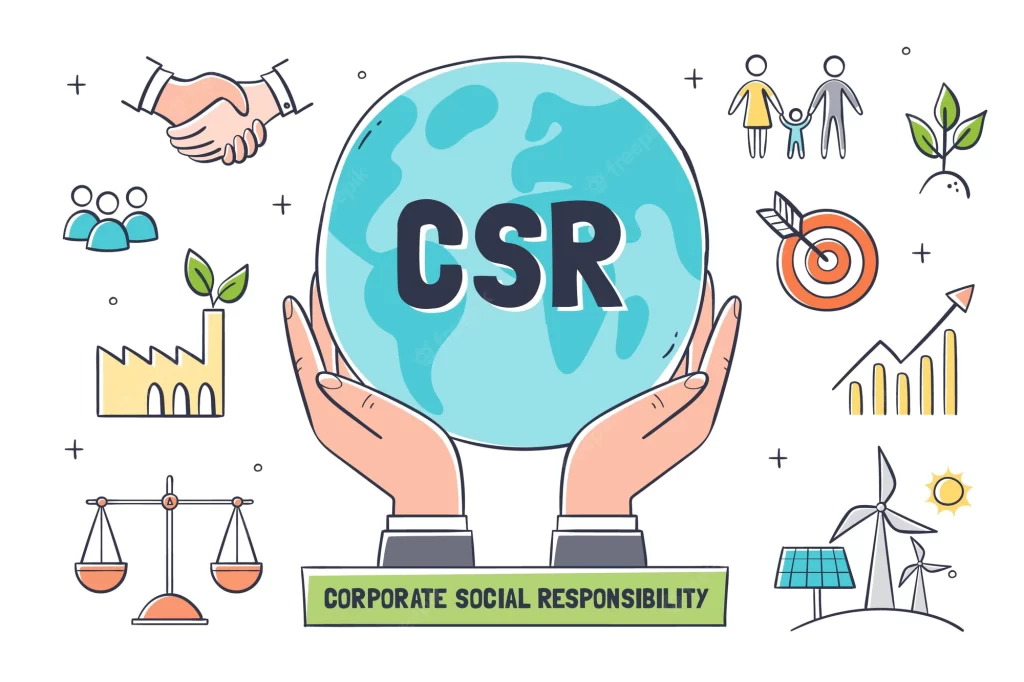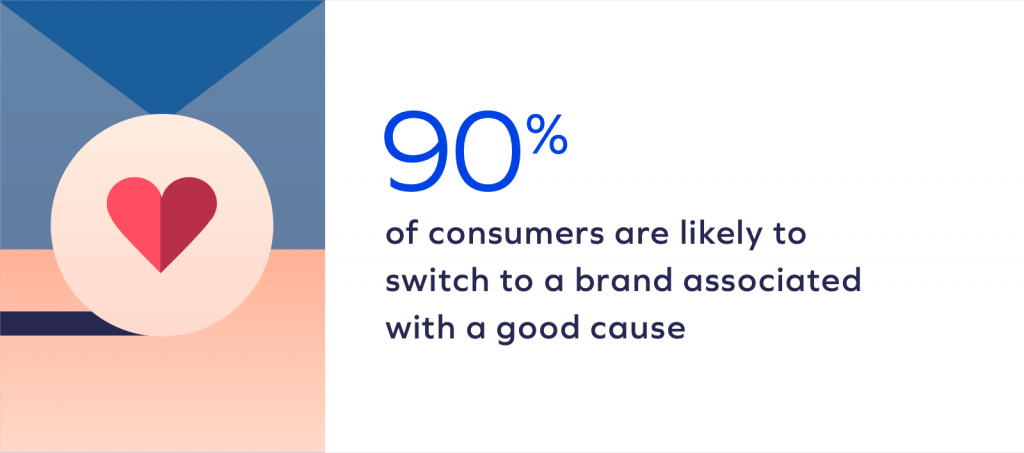Cause Marketing: Doing Good While Looking Good
Have you ever noticed those flashy ads where significant brands partner with charities? You know, like when they donate a percentage of plush toy sales, or you can click to give a few pennies while shopping online. That’s called cause marketing, my friend! It’s when businesses piggyback on a good cause or non-profit and tie it in with their products or services.
The charity gets money and exposure; the company gets to look like it’s full of lovely people who care about society; and consumers get warm fuzzies for supporting the said cause. In theory, everyone wins – firms boost sales by yanking heartstrings while giving something back to the community.
But let me tell you: these days, cause marketing is about as common as pigeons in Trafalgar Square. Every brand, from crisps to clothes, wants to flaunt its humanitarian side. So that begs the question – is it really about generosity and giving back? Or is it just another clever advertising trick?
Table of Contents
The History Of Cause Marketing

Given how omnipresent it feels now, you might think it’s been around forever. But nope – believe it or not, cause marketing wasn’t even a thing until 1984. American Express and a Harvard Business School lecturer coined the term because they thought there might be something in this whole “brand purpose” schtick.
Their ground-breaking campaign allowed AmEx cardholders to donate money to renovate the Statue of Liberty and Ellis Island simply by using their cards. People went wild for it, loads of new customers signed up for AmEx, and both sites got spruced up – your classic cause marketing success story!
Since then, things have gone from strength to strength; throughout the 90s and noughties, what started small became an industry worth billions of pounds yearly. If a big-name brand doesn’t have some kind of social impact initiative alongside its average sales strategy… well, I’d be pretty surprised!
Recent High-Profile Examples
To give you an idea of how ubiquitous cause marketing has become, let's run through a few headline examples from recent years:
- Starbucks & Product (Red): This collaboration sees the coffee kings donate proceeds from special (Red) branded drinks and snacks to the Global Fund to fight AIDS, Tuberculosis and Malaria
- Apple & (Product) Red: The tech titans release (Red) versions of their iPhones, accessories and more, with portions of sales going to the same Global Fund as above
- Walkers & Comic Relief: Each year, Walkers do special edition crisp flavours voted for by the public, with a chunk of money from every pack sold getting donated to Comic Relief
- Boots & Children In Need: The pharmacy chain sells unique teddy bear toys and merchandise, donating profits to the children's charity appeal
- McDonald's & Circular Economy: This multi-year plan involves Maccies channelling food waste into power, recycling packaging into playgrounds and toys, and cutting emissions across their supply chain
Those are the massive ones that spring to mind – I could reel off hundreds more, from clothing retailers to travel companies, that have all jumped on the ethical marketing train. This tactic is so widespread now that consumers have started to expect it to be the norm.
Why Do Companies Use Cause Marketing?

1) Developing Brand Recognition and Loyalty
First, the best motivator for adopting cause marketing is enhancing your reputation and securing more devoted customers. People today are concerned about corporate social responsibility (CSR) and environmentally friendly business practices.
By publicly associating your brand with a good cause that reflects your principles, you let people know that you are a conscientious company which cares about the world around them. It makes you look good!
Furthermore, given the prevalence of recent greenwashing and other forms of corporate dishonesty, individuals are likelier to back up brands that go beyond mere rhetoric by actually taking action through their support for charities.
2) Distinguishing Yourself from Rivals
In congested marketplaces where differentiation is complex, placing your logo next to a charity’s can be an easy way to make your ads or products stand out. It adds an extra dimension to your brand – something emotional beyond specs or price lists. Causes are also a great way of getting noticed for things besides shifting units.
3) Reaching New Audiences
While doing so, businesses should employ cause-related marketing to penetrate specific demographics they may have failed to attract. For instance, if this “blokey” brand is known for its laddish humour, it could opt for children’s hospitals ––a friendlier everyday cause–– to broaden its appeal across different age groups apart from young males who form its core fan base.
4) Boosting Sales and Staff Participation
Everything mentioned above works towards one end ─ selling more! According to research in 2017, 87% would willingly switch over brands provided both were priced equally well, while another study showed that the figure rose even higher among millennials with 94%. Therefore, it makes financial sense, regardless of anything else.
Additionally, donating money towards charitable organisations plus involving employees in these initiatives serve to improve attitudes within work settings, thus leading to increased levels of commitment for workers who would feel proud being part of such organisations. When employees are happy, they tend to be more productive, which leads to better customer service and increased client retention rates.
But It's Not Always Sunshine & Rainbows
I wish I could go on about how great it is for brands to give back, but I can't. As much as it wants to do good in the world, cause marketing is almost always about publicity and profit rather than charity.
Throughout the years, there have been countless examples of large corporations taking a big game about supporting specific causes, only to reveal that they have given next to nothing or nothing at all. Some bloggers and journalists have even started using phrases like “cause-rapping” and “causemunion” to describe these particularly cynical forms of disingenuous philanthropy.
Do you remember when Kid's Company went under? M&S and Sainsbury's ran massive campaigns claiming they were helping vulnerable children supported by the charity, but they later admitted that their donations were significantly smaller than advertised.
It’s a blatant PR move: slap a charity’s logo on your packaging or ads and watch people fall over themselves to congratulate you. But often, the money doesn’t quite add up. Sometimes, so-called “cause marketing” amounts to little more than tokenism or virtue signalling, a way for companies to look caring without actually doing anything.
| Cause Marketing Benefits | Drawbacks |
| Builds brand reputation | It can seem exploitative if done cynically |
| Increases customer loyalty | Lack of transparency around accurate giving levels |
| Reaches new demographics | It may distract from the core cause's mission |
| Boosts sales/employee engagement | “Cause fatigue” from overexposure |
Striking the Right Balancing Act
So where does that leave us? Is cause marketing a force for good, used too frequently as an excuse for profit? It's a mix of the two – a balancing act.
They were done with proper consideration, long-term commitment and transparency cause marketing can be a fantastic vehicle for giving back sustainably. Companies can leverage their scale, reach, and resources in ways individuals and traditional charities sometimes can't.
But when it starts to feel like an empty gesture or passing fad, you've got to be wary of greenwashing or purpose-washing. Empty words, tiny donations, and a lack of genuine change behind the PR fluff.
So here's the advice I'd give to both businesses and consumers when it comes to authentic cause marketing:
For Brands & Marketers

1) Pick Causes That Align Authentically
Rather than jumping on the next big global bandwagon, invest time researching and speaking to causes that align with your brand identity, product/service, and company values. The partnership needs to feel like a natural, credible fit.
Slapping any old logo on your stuff may grab headlines for a week, but sooner or later, people will see through the hollow gimmick if there's no real connection to your core purpose. A science museum teaming up with a space charity? Makes sense. An alcohol brand pushing literacy programs? A bit of an eyebrow-raiser.
2) Treat It As A Long-Term Commitment
This can't just be a one-off flash in the pan, either. Make a genuine, sustainable plan for supporting the cause through volunteering, employment opportunities, R&D, fundraising events and so on—a shared-value, symbiotic relationship rather than a flimsy, tacked-on promotion.
Talk to the charity, understand their long-term goals, and figure out creative ways your business capabilities can help beyond just cutting a single cheque once a year. It takes time and effort, but that's how you build authenticity.
3) Walk the Walk Behind the Scenes
But don't stop there – the commitment must permeate your entire organisation, too. Look inward at your supply chains, materials sourcing, employee welfare policies and operations for improvement. It's no good pushing a green cause if your factories still pump out toxic waste, you know?
By undergoing your transformation alongside the charity work, you're proving you're willing to change and hold yourselves accountable. It keeps things balanced without coming across as preachy or hypocritical.
4) Let The Cause Do The Talking
Regarding the actual marketing activations and publicity, ease off on making it too overtly sales-driven or branded. The integrity diminishes if it feels like little more than a cheap commercial at every turn.
Instead, emphasise highlighting the great work of the cause itself through powerful messaging and content that shows the real-world positive impact. Focus less on pushing your logo or products and more on inspiring stories that emotionally move people. That's where you'll get the most buy-in and spread awareness naturally.
For Consumers & The Public

1) Do Your Research
Don't just take a company's word for it when they start banging on about ethics and causes. A bit of due diligence goes a long way in separating authentic initiatives from hollow ones.
Scrutinise the finer print and the numbers behind their claims – what's the percentage donated? How long has the partnership existed? Is it a one-off stunt or a continuous program? Check sources like charity evaluators, too, for a balanced view.
2) Look For Transparency & Accountability
The brands doing it right will happily share precise, upfront figures and targets without any smoke and mirrors. They'll produce regular impact reports and have their donation trails audited. If something seems opaque or dodgy, call them out on it!
3) Prioritise Sustained Action Over Flashy Ads
Actions speak louder than words and million-dollar ad campaigns. Is the company genuinely evolving how it operates and treats stakeholders? Or is the “purpose” more about creating a smokescreen for business as usual?
If it's all style over substance with no meaningful change past throwing money at a logo, that's a big red flag of greenwashing and opportunism rather than authenticity. Stay aware of slick marketing.
4) Support the Underdogs Too
Finally, while it's become the norm for all major brands to have trendy social tie-ins now, don't sleep on the smaller, genuinely grassroots organisations and startups doing it out of genuine passion rather than commercial motives.
These are bucking the system and industry standards through sustainable products, conscious business models and baked-in giving from day one. The mainstream often misses it, but it is so worth championing!
Scoping Out The Bigger Picture
I could ramble on all day about the complex ethics and psychology behind effective cause marketing strategies. But at the end of the day, what matters most is whether it's being done authentically and transparently while driving positive, measurable change.
Nobody's saying brands can't make a profit or be motivated by commercial factors – that's just business, baby! The issue crops up when causes feel like cheap accessories or afterthoughts rather than a genuine core part of companies' operations.
So be an intelligent consumer – scratch beneath the cuddly ad veneer to ensure companies pull their weight beyond empty words. And for brands themselves, put in the hard yards to build legitimately transformative partnerships with purposeful longevity.
When enterprises and social impact groups can find that sweet spot of mutualism, everybody wins – companies get to grow sustainably, causes receive invaluable resources and awareness, and we all feel better about the world. That's the true spirit of cause marketing done right!
Cause Marketing FAQs
What are the dissimilarities between cause marketing and corporate social responsibility (CSR)?
Cause promotion refers only to those profit-making advertising efforts connected with a particular charity or social organisation. CSR is an overall term that encompasses a company’s morality, sustainability, and social duty beyond marketing alone.
Is there any legal restriction on cause marketing?
There are specific laws which deal with labelling transparency, accurate donation disclosures, misleading claims prohibition, etc., to safeguard consumers against false advertising associated with promotional activities for causes. In the UK, these matters are overseen by ASA and CMA.
What sorts of causes do brands usually partner with?
Child protection; poverty alleviation/food security; cancer research or other health issues; environment/sustainability concerns; disaster response, among others, but it depends entirely on company fit.
How much do companies typically give in cause marketing campaigns?
The range is extensive, but most initiatives commit themselves to donating between 3% – 10% of revenue from products sold or profits made, excluding tax up to a specific maximum limit set by them. Reputable schemes will state this clearly at the outset.
Have there been many notorious failures or controversies within this space?
Yes – here are some examples:
Pampers was criticised for giving just pennies per pack sold.
Krispy Kreme’s ‘Drink Pink’ campaign raised millions yet donated hardly anything.
Susan G Komen was accused of pinkwashing without delivering real change for breast cancer awareness.
How can smaller businesses participate in cause-related marketing?
Startups/ small-to-medium-sized enterprises should:
Give part of their earnings towards supporting community projects;
Advertise jointly packaged goods/services together with fundraising activities for charities registered locally;
Sell discounted items or specials whose proceeds go directly towards benefiting specified non-profit organisations;
Promote staff involvement through volunteer work, among other things.
What are some risks of cause marketing?
Some pitfalls include:
Being seen to exploit causes purely in pursuit of profit;
Failure to donate adequately or accurately disclose information regarding donations made;
Perceived lack of connection between brand identity and selected cause;
Drowning out or undermining the message being put across by the supported cause;
Contributing towards ‘cause fatigue’ due to saturation with similar types of promotions.
Key Statistics
- 88% of consumers said they would buy a product with a social/environmental benefit if given the opportunity and price/quality were equal (Cone Communications, 2017)
- 48% of global consumers said they are more loyal towards a brand that partners up with a charity or good cause (Edelman Earned Brand, 2018)
- 54% of younger “Gen X” and Millennial respondents look for cause marketing claims when deciding between product brands (Mintel, 2015)
- Cause marketing fundraising revenues grew 3.4% to reach $2.05 billion in the U.S. and Canada in 2017 (IEG Sponsorship Report)
- The top 5 most marketable causes according to cone audiences:
- Hunger (82%)
- Children's Education (81%)
- Job Training (79%)
- Health & Diseases (78%)
- Environmental Protection (78%)
